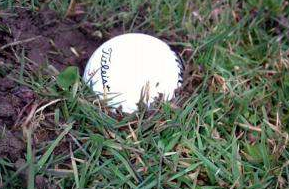
There’s no doubt about it, Autumn is here, and whether you like it or not, the wet, brisk conditions are going to affect your golf game.
Mud on the Ball – There’s always some degree of unpredictability when you hit a ball with mud on it but contrary to popular belief, there is a way to determine the general direction that your ball will go.
The general rule of thumb is that your ball will fly in the opposite direction of the side that the mud is on. For example, if you look down at your golf ball and you see that the left side of the ball is caked with mud, your ball is going to fly right (or slice, if you’re a right-handed player). Obviously, if the mud is on the right, the ball will go left.
It’s important to realize that there is no sure way to determine how much your ball will curve due to the mud but this tip should at least give you an idea of the direction that your ball is likely to go and you can play your shot accordingly.
Cold Temperatures – It’s simple physics, when the air is colder, your ball won’t go as far. For every 10 degree drop in temperature (Farenheit), your ball will fly roughly 2 to 3 yards shorter. So the difference your ball travels on an 80 degree day compared to a 50 degree day could be the difference of an entire club.
The type of ball you’re playing will also affect flight. In the summer, it’s beneficial to use a soft, high-spin ball to compensate for the hard fast greens, but in the colder temperatures, those balls will not go as far. So next time you’re playing in that environment, consider switching to a harder (and in most instances, cheaper) golf ball.
Soft Fairways – When hitting iron shots, the goal is to hit down on the ball to compress it, and the more you compress it, the farther it will go. This is much easier to do in the summer when the ground is hard but in the fall when the ground is wet it can result in a lot of chunked shots. The best way to stop this from happening is to not get too steep with your swing. Think of almost picking the ball off the ground on those soggy lies. You’re ball probably won’t shoot off the face but you can be sure you won’t end up hitting fat shot.
Taking Advantage of the Rules – The rule book isn’t there to penalize you, it’s there to help you. A lot of times, courses will adopt local rules that make it easier to play in soggy conditions. For instance, if you’re ball plugs in the fairway, you may be able to lift, clean and place it. In some instances, you may even be able to move a ball from the fairway onto the green (granted you don’t move any close to the hole). Regardless of what situation you find yourself in, not knowing the rules can put you at a significant disadvantage, so read up.